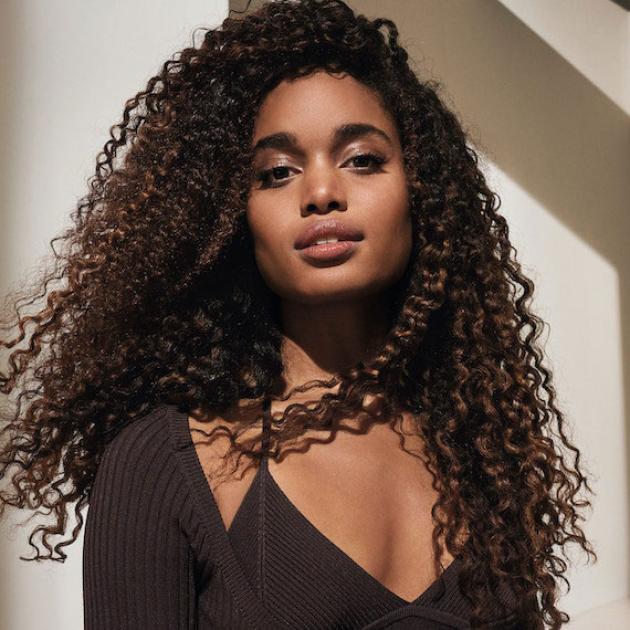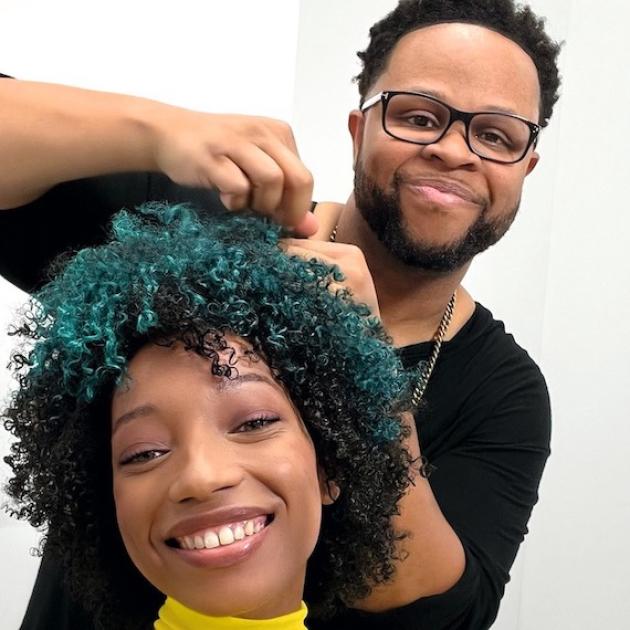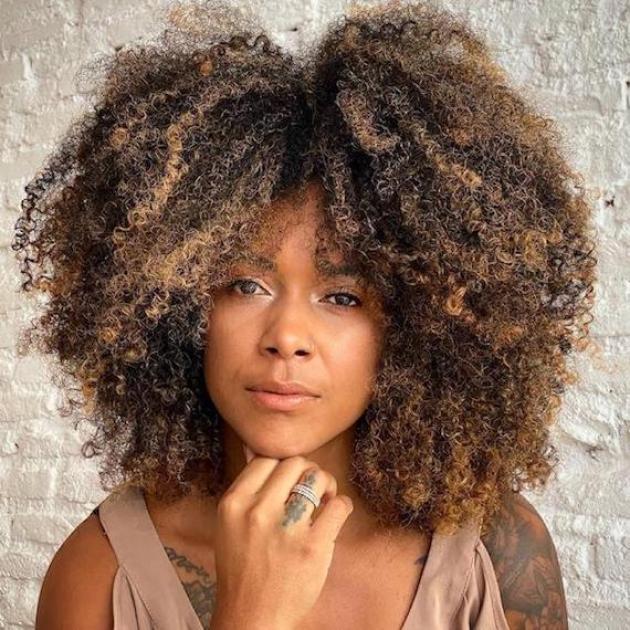*This* is How You Decode the Curly Hair Types
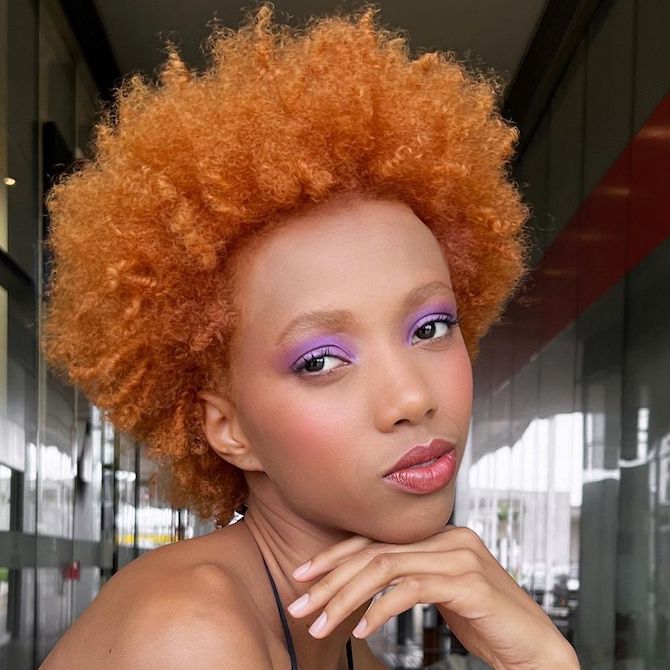
Anyone with curly or wavy hair knows that every head of curls and coils is different. You might have loose, tumbling tendrils, or soft, bouncy loops, or tight, textured zigzags – or a mix of all three. That's why the curly community has come up with a way to help you decode your curly hair type, and it all comes down to a simple numbering system, spanning 1 (straight hair) to 4 (coily hair), with A, B and C patterns in each group.
The curly hair types system proves a useful guide when you want to know how to care for and style your hair to get wave or curl definition. Plus, if you're a hairdresser, you can use it to help your clients get the best from their texture too. After all, a styling routine for 3C curls will be very different to 4C zags. Here, we reveal what the hair types actually mean, and how you can figure out which group (or groups) your locks fall into. This is what you need to know…
What Determines My Curl Pattern?
First, let's talk about how waves and curls find their shape. Your pattern is determined by the shape of the hair follicles that each strand grows out of, and the flatter a follicle is, the curlier the hair will be. Not all follicles on one head of hair will always follow the same shape; some might be round, resulting in straighter strands, while flat ovals can give you tumbling curls and tight corkscrews.
But there are other factors that can impact the curl pattern. If hair becomes dry and damaged, this may lead to frizzy lengths, with waves and ringlets that appear less defined. That's why it's important to find a routine that truly enhances natural texture, giving the curly hair pattern the level of moisture and maintenance it craves.
How Do I Tell What Type of Curl Pattern I Have?
The best time to figure out your curl texture is when the hair is wet. So, before diving into the different curl patterns below, wash hair and assess the shape it takes on after detangling. Keep checking your hair texture as it air-dries, taking note of any natural waves or natural curls that start to appear. You may find your hair boasts a range of different textures. If that's the case, tailor your regimen for your tightest curl pattern.
What Should I Do if Curls are Damaged?
If you think waves and curls might be damaged, a repair regimen is needed – and fast. With the ULTIMATE REPAIR collection, all hair types and textures get the intense nourishment they need to stay healthy. Start with the ULTIMATE REPAIR Shampoo, a rich lather that cleanses away breakage-causing pollutants and impurities, while kick-starting the bond-rebuilding process. Then, follow with the ULTIMATE REPAIR Conditioner, which is packed with a skincare-inspired blend of AHA and Omega-9, designed to replenish stressed-out strands from the inside out. The ULTIMATE REPAIR Mask can be added to the regimen for a weekly boost. With smart conditioning agents, it detects areas of damage to deliver targeted nourishment.
The final step is the ULTIMATE REPAIR Miracle Hair Rescue, which repairs damage in 90 seconds* to leave even frizzy hair 12x smoother** with 99% less breakage***. Mist it through waves, curls or coils from root to tip, allow it to absorb for 90 seconds, then style as usual.
Type 1: Straight Hair
If you have hair that's sleek, smooth, and unlikely to kink or curl when styled into braids or hit with humid weather, your locks are probably type 1. In other words, your hair is straight. As with any hair type, type 1 is split into A, B, and C patterns – where you sit will depend on the texture and consistency of your straight hair:
- 1A hair is 100% straight and very fine, with no bends or waves in sight.
- 1B hair is slightly more voluminous with a subtle wave – though the overall look is still smooth and straight.
- 1C hair carries more body and is characterized by its thicker, fuller strands.
If you're part of the curly and wavy hair community, you'll be sitting somewhere in type 2, 3 or 4. Keep reading to find out how to decode your curls…
Type 2: Wavy Hair
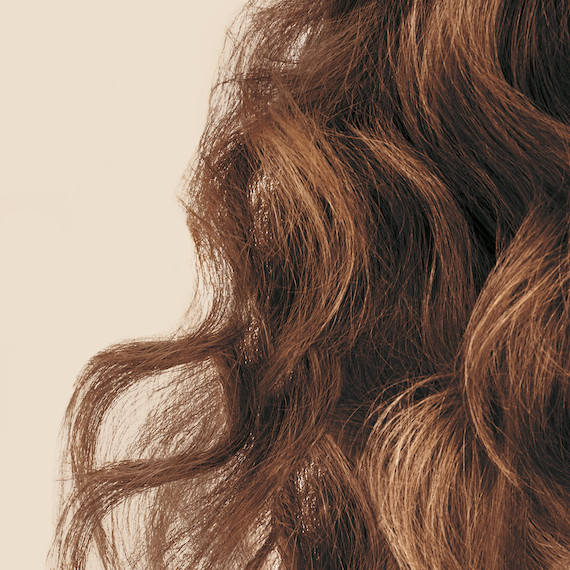
You'll know you have type 2 hair if it's neither curly or straight, but somewhere in between. This hair type is wavy, but the depth of these waves differ from 2A to 2C. It can also be quite prone to frizz, but it's super versatile to style, allowing you to easily switch between straightened locks or bumped up texture.
Type 2A Hair
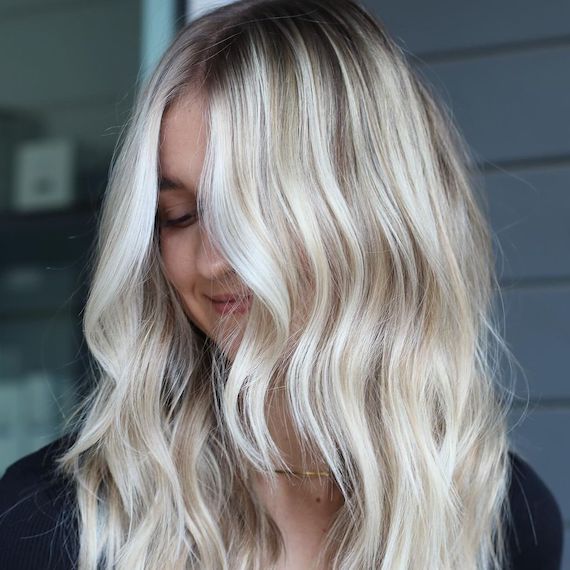
Image Credit: @bethanyschair
Hair strands that start straight at the roots but fall into loose waves sit in the 2A group. It might look like straight hair all over when it's wet, but when it dries the movement and texture starts to appear. This hair type doesn't always hold a curl well, so if guts and body is what you want, you'll need to apply texturizing products, like EIMI Ocean Spritz salt spray. Mist it through clean, damp hair, style in two to four even braids (the more, the wavier), then release when dry for a beachy waves look. Apply extra salt spray and scrunch to give that wavy hair surfer style more hold.
Type 2B Hair
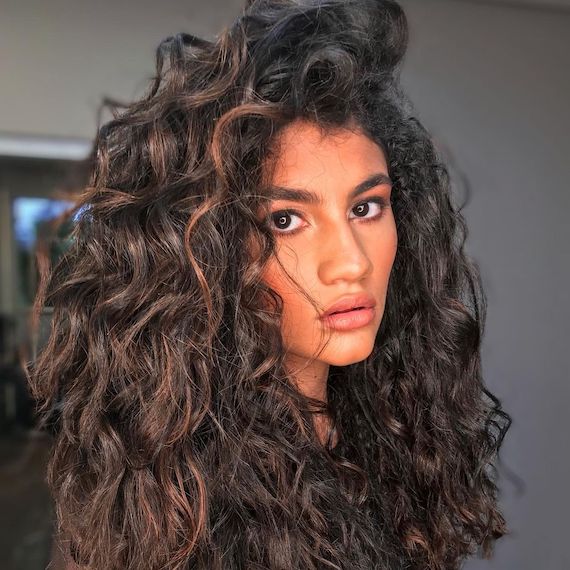
Image Credit: @jhonyveiga
Like 2A hair, 2B hair tends to be straighter at the crown, but it tumbles into more defined S-shaped waves, making it easier to style locks into loose curls. However, this hair type can also be a little more prone to frizz, so you may want to add a flyaway-stopping spray to your styling kit. NutriCurls Milky Waves Spray is perfect because, like a hydrating mist for locks, it infuses hair with instant smoothness and nourishment, but doesn't add weight. You can apply it as a leave-in conditioner when hair is damp, or work it into dry, two- or three-day hair to keep the mid-lengths and ends defined.
Type 2C Hair
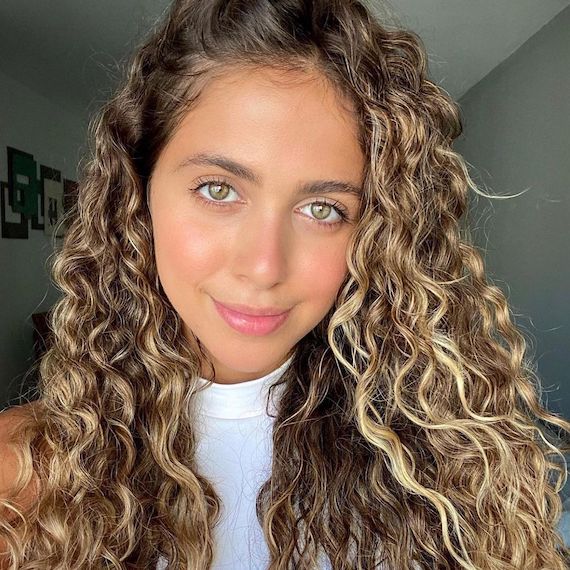
Image Credit: @lotufo
The most defined waves are found in type 2C hair. You'll see a stronger S-shaped curve, and strands may be thicker, meaning you can work a little more product in there. It's easy to mistake this hair type for 3A, 3B or 3C curls, but it won't have the same undulating ringlets and coils – so analyze your wave pattern carefully. The good news is, it's easy to cajole these curves into curls with lasting hold. Apply EIMI NutriCurls Boost Bounce mousse to clean hair while damp, and dry with a diffuser attachment. Once hair is 100% dry, wrap lengths around a curling iron, then set with EIMI Stay Firm hairspray to set.
Type 3: Curly Hair
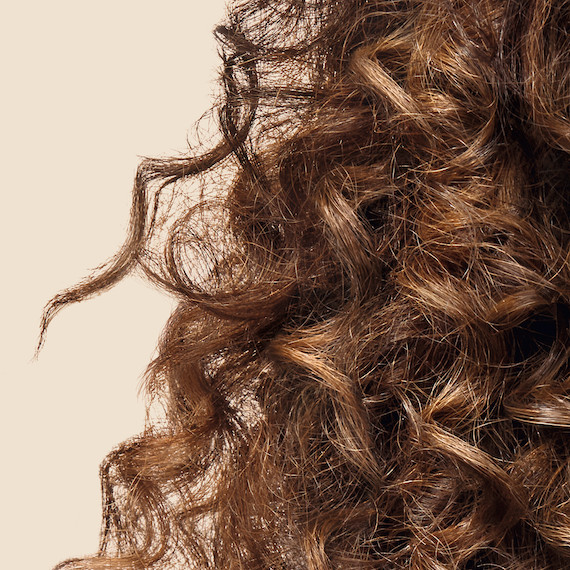
Now we're getting into the curls. Type 3 hair boasts an abundance of radiant ringlets, from soft, tumbling spirals (3A) to tighter, springier corkscrews (3B and 3C). Rather than S-shaped strands, as seen in type 2 wavy hair, these bountiful curves are fuller and more rounded. With the right tips, you can give this curl type an added boost of long-lasting body.
Type 3A Hair
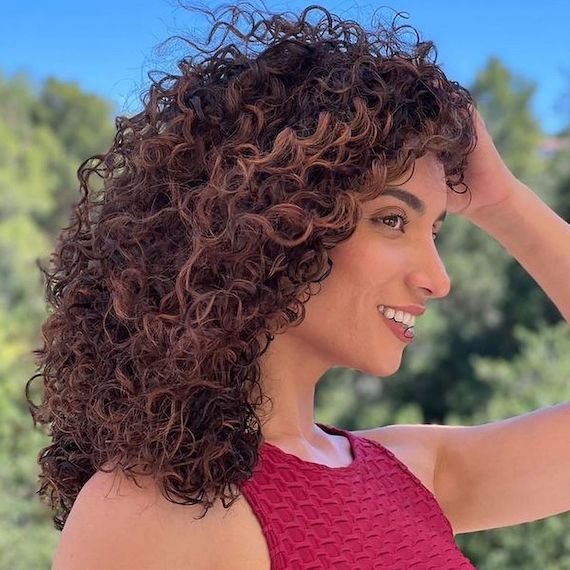
Image Credit: @kique_stylist
If your locks fall into sumptuous spirals that don't have a lot of shrinkage (meaning they don't decrease in length much when hair goes from wet to dry), you have type 3A hair. This is a looser texture that has plenty of bounce, but can lose its shape without the proper care. As such, it's important you research how to dry curly hair for enhanced body, and use gentle shampoos that won't strip strands of their natural, nourishing oils. Try NutriCurls Micellar Shampoo to delicately purify, and keep EIMI NutriCurls Fresh Up spray to hand to reactivate your texture in between washes.
Type 3B Hair
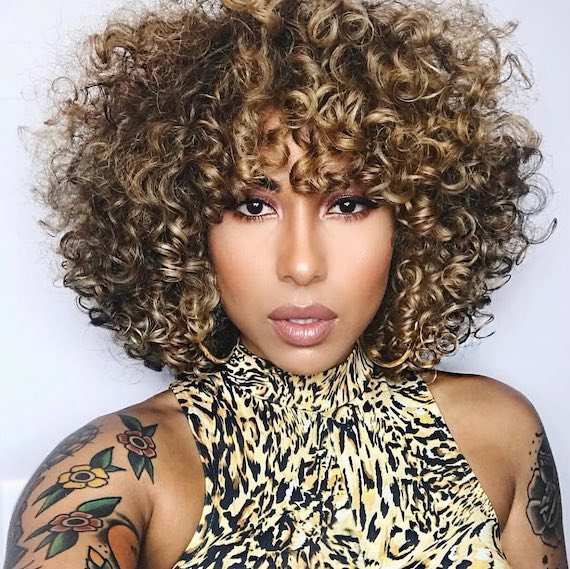
Image Credit: @salonj._rittenhouse
While the 3B curl type tends to be tighter and have more shrinkage than 3A locks, they still create a relatively loose curl. In terms of size, you should be able to fit a pen through one of your ringlets. You might find that these curls are tighter at the front and softer at the back, which sometimes means the face-framing sections need a little more encouragement from your styling products. If this is the case, try finger curling the looser sections by working EIMI NutriCurls Soft Twirl through damp lengths, then wrapping a small piece around your finger until you reach the root. Release, then move on to the next piece, until all curls have been carefully twirled. Once hair is dry, you'll have boosted definition through every strand.
Type 3C Hair
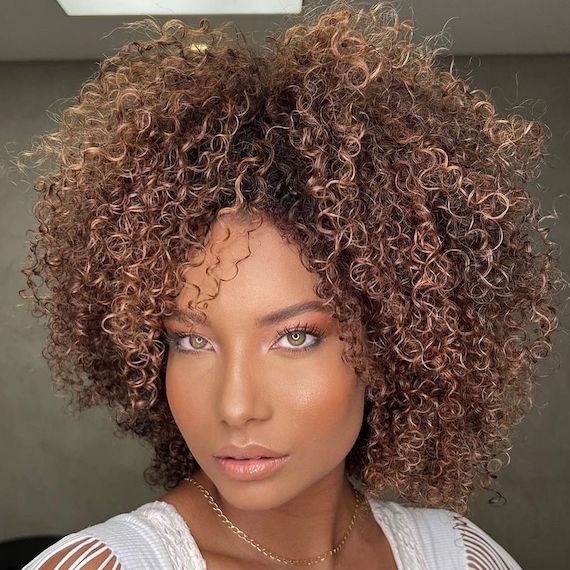
Image Credit: @jhonyveiga
If curls are dense and more defined, you have type 3C hair. Your mane tumbles into dazzling corkscrews that are tighter than 3B strands, but less coily than type 4 curls. Your routine should make hydration a priority, so moisturize your curls to enhance their shape. This could mean swapping your traditional shampoos for a co-washing product, like NutriCurls Cleansing Conditioner. The low-foam, silicone-free formula gently lifts out any impurities, while respecting your hair's natural oils to leave tighter curls softer, fresher and bouncier.
Type 4: Coily Hair
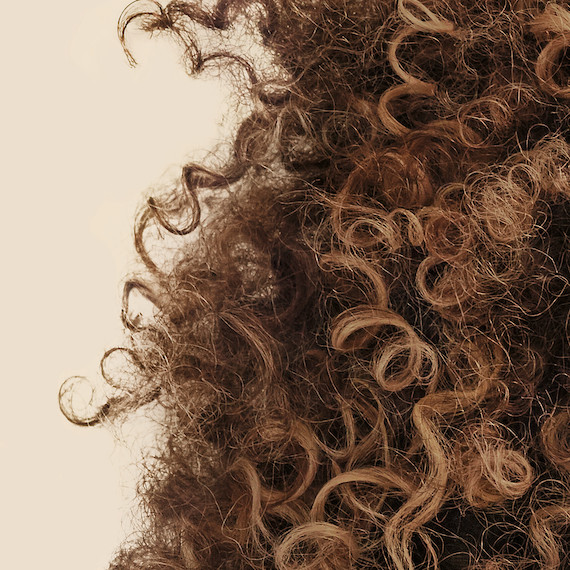
If you have textured coily hair, you're working type 4 curls. Your locks can range from soft, floaty and fine (4A), to abundantly thick, coarse and zigzagged in shape (4C). Getting the best from your beautiful mane means curating a routine that's high on hydration, so consider cleansing conditioners, hair masks and creamy, balmy stylers your new BFFs.
Type 4A Hair
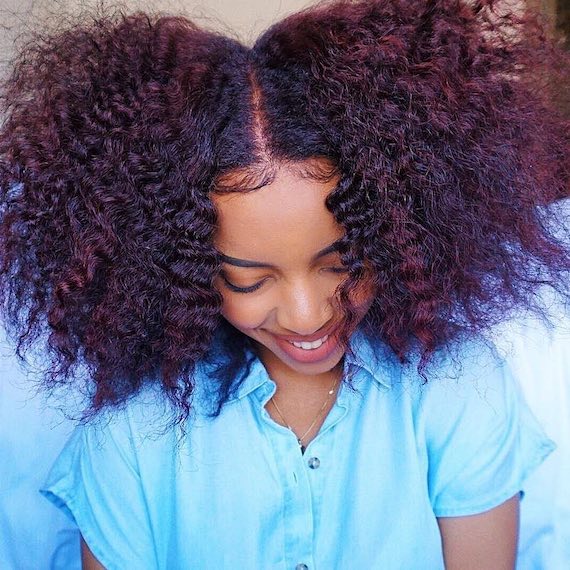
Image Credit: @markcolorist
These types of curls are soft, springy, S-patterned curls that are on the looser end of a coily hair type. Rather than forming a zigzag, they feature dense, tight curls that you can bump up with a combo of conditioner and curl cream. After washing, mist with NutriCurls Milky Waves first to lock in nourishment, then work EIMI NutriCurls Curl Shaper through hair in sections. The gel-cream texture is great for adding definition. Once you've evenly distributed the gel, dry hair with a diffuser or allow it to air dry. Add more of the mist if your hair is highly porous, and then refresh with EIMI NutriCurls Fresh Up in between washes.
Type 4B Hair
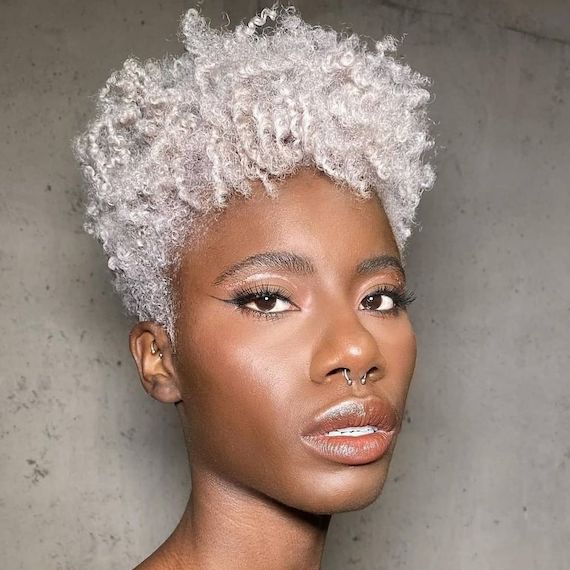
Image Credit: @jhair_stylist
Look closely at your hair texture. If you think your coils are similar to 4A but are forming a sharper Z shape, you have type 4B hair. This lustrously full mane reaps all the rewards of richer, gel-based products, so add the NutriCurls Curlixir Balm to your care and styling kit. Mist the Elements Renewing Leave-In Spray in sections first, then use the balm to shingle your hair. This means applying the product to each individual curl, using your thumb and forefinger to smooth it through – goodbye frizz! Next, start wrapping the curl around your index finger, up to the root, and release. Work section by section to encourage a springier finish with extra stretch and height. If your hair is shorter, like the look above, you could also try comb coiling, which sees you comb from root to tip, before twirling the comb at the end to create individual twists. Let coils dry in these twists, then use fingertips to shake your hair loose.
Type 4C Hair
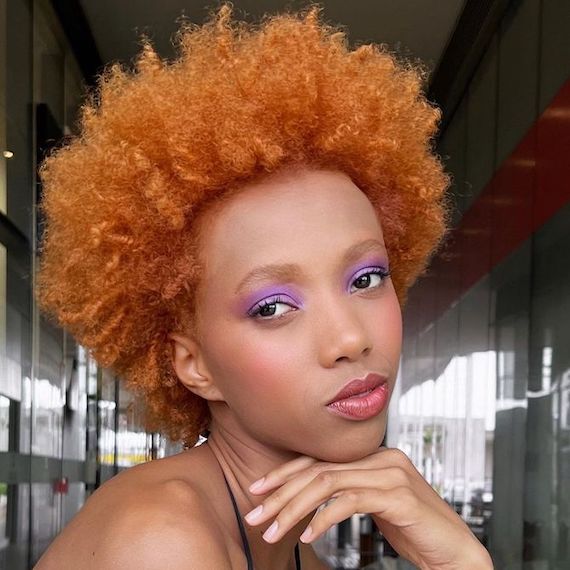
Image Credit: @jhonyveiga
Type 4C hair is very similar to type 4B, but the zigzags are even tighter, and your hair sees even more shrinkage when it goes from wet to dry. These tight coils allow you to work a range of dreamy styles, from twisted ponies to braided buns, and you can also try the shingling and comb coiling tricks above. However, 4C locks tend to be fragile and prone to hair breakage, so maximum nourishment is key here. Make the NutriCurls Deep Treatment a staple in your routine (along with the Cleansing Conditioner), and consider using a hair steamer to help the treatment penetrate even deeper. The Curlixir Balm styling cream will add another layer of nourishment, and can be used on dry or wet hair to help enhance shape and texture.
Curly Hair Type FAQs
What Hair Type Holds Curls Best?
While type A straight hair struggles to hold a curl, naturally wavy and curly hair types can be enhanced with a curling iron, and they will hold the shape well. Just make sure you finish the look with a hairspray to get extra wear out of those defined ringlets. EIMI Stay Firm will keep curls fresh and bouncy for longer, while protecting strands from the effects of humidity and UV rays.
What is the Weakest Part of Curly Hair?
Usually, the weakest part of curly and coiled hair – and, in fact, all hair types – is through the ends. This is the 'oldest' hair, so it's been exposed to more wear and tear over a longer period of time. The point where strands start to curl can also be delicate and damage-prone. This is because the natural oils that travel from the root and down the hair shaft can struggle to work their way around each ringlet.
Will Hair Be Less Curly if it's Cut?
A fresh cut can have a big impact on the way waves and curls fall, but it's not going to make hair appear straighter. In fact, it could actually cause the curl pattern to tighten up. Why? Because you're trimming away the damaged, broken, sometimes-frizzy ends that can look wispy and flat. Plus, if it's a drastic cut, you're taking away weight that may have been dragging locks into a looser shape. So, don't be surprised if, after a cut, curls have more bounce than ever before.
Do Layers Make Wavy Hair Curlier?
Layers won't make waves curlier, but they will help to build up definition, giving the full head of hair a dose of movement and bounciness. Try it on finer locks for instant body and volume. Long layers amp up the lift while retaining hair's length, and choppy layers are a must for a bolder statement with even more volume.
And that's the curly hair types covered! But don't worry if your hair doesn't fit into just one of these curl patterns; it's common for a head of hair to have a whole mix of texture. Simply sit down with this guide and work through hair in sections to identify what the varying patterns need. The time and care you put in will be so worth it for those bountiful curls.
* When using ULTIMATE REPAIR Miracle Hair Rescue.
** Vs. non-conditioning shampoo.
*** When using ULTIMATE REPAIR Miracle Hair Rescue. Instrumental test versus non-conditioning shampoo.

